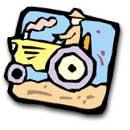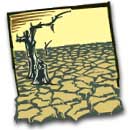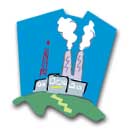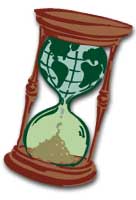Category Descriptions
Here are short summaries of what we mean by the various
categories covered in the Solutions Site.
Agriculture
Growing crops organically,  integrated
pest management, aquaculture, hydroponics, preserving genetic stocks,
genetic manipulation of seeds, radiation of crops, halophytes, factory
farming, land use practices, chemical use, food scarcity, permaculture,
and other issues. integrated
pest management, aquaculture, hydroponics, preserving genetic stocks,
genetic manipulation of seeds, radiation of crops, halophytes, factory
farming, land use practices, chemical use, food scarcity, permaculture,
and other issues.
Air Pollution
Reducing vehicle emissions,  industrial
pollutants, and other human generated air pollutants such as those caused
by fires. Reducing global climate change gases and particulate matter
responsible for respiratory ailments will be among the main issues discussed. industrial
pollutants, and other human generated air pollutants such as those caused
by fires. Reducing global climate change gases and particulate matter
responsible for respiratory ailments will be among the main issues discussed.
Biodiversity
Concerns ranging from protection of  tropical
forest species to those of the coral reefs, from protecting oceans against
pollutants to stemming over-fishing, from re-introducing species to protection
of migrating birds, and numerous other issues. tropical
forest species to those of the coral reefs, from protecting oceans against
pollutants to stemming over-fishing, from re-introducing species to protection
of migrating birds, and numerous other issues.
Desertification
Ways to stem desertification, from volunteer small
 scale
erosion control efforts to more elaborate techniques, from reducing deforestation
on desert borders to controlling domestic grazing animals. The use of
special crops, such as Atriplex numilaria, which can be eaten by
domestic grazing animals without being destroyed, will also be discussed. scale
erosion control efforts to more elaborate techniques, from reducing deforestation
on desert borders to controlling domestic grazing animals. The use of
special crops, such as Atriplex numilaria, which can be eaten by
domestic grazing animals without being destroyed, will also be discussed.
Energy
Energy efficiency and use of alternative sources of energy, from reductions in home consumption to large scale
energy efficiency measures in industries, agriculture, and transportation;
from use of wind mills, biogas, solar energy, and minihydropower, to fossil
fuel emission reduction measures.
sources of energy, from reductions in home consumption to large scale
energy efficiency measures in industries, agriculture, and transportation;
from use of wind mills, biogas, solar energy, and minihydropower, to fossil
fuel emission reduction measures.
Industry
What industries can do and are doing to reduce pollutants and natural resource consumption, to re-use and recycle
materials, to incorporate environmental concerns in the siting of facilities,
to reduce occupational health hazards, and to take other measures to make
environmentally friendly products.
reduce pollutants and natural resource consumption, to re-use and recycle
materials, to incorporate environmental concerns in the siting of facilities,
to reduce occupational health hazards, and to take other measures to make
environmentally friendly products.
Population
Many of the most successful initiatives to reduce
population growth  can
be attributed to taking an integrated approach, one that addresses the
quality of life through programs that not only provide for family planning
and sex education, but also work to alleviate poverty, increase education
for girls and women, protect the environment, and prevent AIDS and other
sexually transmissible infections. In this category we will be addressing
issues such as health conditions and population growth, environmental
migration, and resource consumption in the United States. (Women’s
health issues and prenatal development concerns will be discussed in the
Health category.) can
be attributed to taking an integrated approach, one that addresses the
quality of life through programs that not only provide for family planning
and sex education, but also work to alleviate poverty, increase education
for girls and women, protect the environment, and prevent AIDS and other
sexually transmissible infections. In this category we will be addressing
issues such as health conditions and population growth, environmental
migration, and resource consumption in the United States. (Women’s
health issues and prenatal development concerns will be discussed in the
Health category.)
Public Health
Environmental impacts on health, with topics ranging
from meeting nutritional and clean water needs to reducing respiratory ailments
and other health problems resulting from indoor air pollutants; from emerging
and reemerging diseases, such as malaria and dengue, to occupational health
hazards and human waste management.
meeting nutritional and clean water needs to reducing respiratory ailments
and other health problems resulting from indoor air pollutants; from emerging
and reemerging diseases, such as malaria and dengue, to occupational health
hazards and human waste management.
Toxic Chemicals
Ways in which manufacturing, agricultural, and
other practices,  including
small scale operations, can be and are responding to the need to control
toxic chemicals released into the environment. Topics will range from
innovative approaches to reducing, controlling and cleaning up toxic chemicals
to the recycling of chemicals between industries. including
small scale operations, can be and are responding to the need to control
toxic chemicals released into the environment. Topics will range from
innovative approaches to reducing, controlling and cleaning up toxic chemicals
to the recycling of chemicals between industries.
Transportation
 Meeting
transportation goals in ways that will effectively provide for basic needs
while minimizing energy consumption and emissions. Meeting
transportation goals in ways that will effectively provide for basic needs
while minimizing energy consumption and emissions.
Waste Management
 Reducing
use of natural resources, increasing use of recycled materials, and modification
of consumption patterns. Reducing
use of natural resources, increasing use of recycled materials, and modification
of consumption patterns.
Water
Protection of clean water sources and maintenance
of water  supplies
as well as use of water for human consumption, agriculture, and industry.
Water diversion and use for power generation may be discussed. (Water
as habitats, e.g. oceans, lakes, wetlands, will be covered in the biodiversity
category and aquaculture will be covered under the agriculture category.) supplies
as well as use of water for human consumption, agriculture, and industry.
Water diversion and use for power generation may be discussed. (Water
as habitats, e.g. oceans, lakes, wetlands, will be covered in the biodiversity
category and aquaculture will be covered under the agriculture category.)
|













